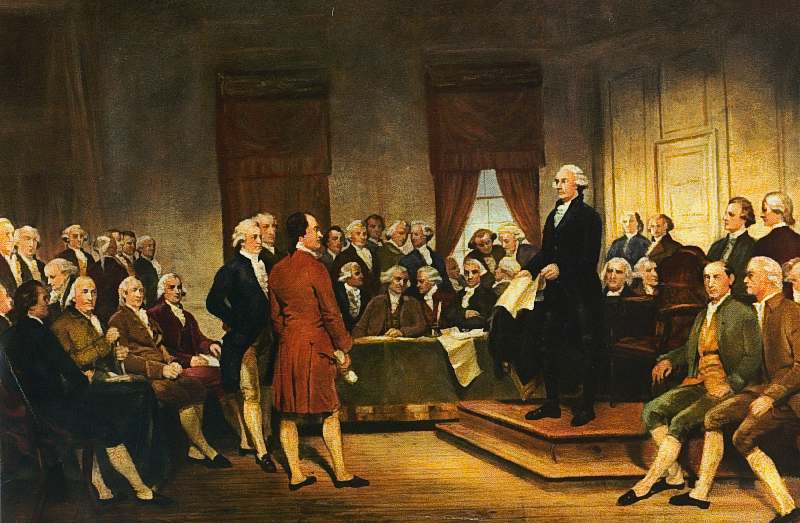
The 2016 United States Electoral College map. (Wiki Commons)
By: Hunter Crowther
Most Canadians are well aware the United States presidential election takes place tomorrow, and Democratic nominee Hillary Clinton and Republican candidate Donald Trump are trading blows one last time before the polls close.
How much do Canadians know about how the U.S. voting process works? Canadians are accustomed to the first-past-the-post system, where representatives of ridings are voted in, and the party with the most elected officials represents government.
In the U.S., however, they don’t vote for the president. Sort of. Let’s explain.
What is the Electoral College?
The U.S. uses what they call an ‘Electoral College,’ where American citizens choose ‘electors,’ who pledge their vote to candidates.
The Electoral College has existed since America’s confederation in 1776. The U.S. Constitution was amended in 1803, enabling the electors to choose both a president and a vice president.
While the electors technically chose the president and vice president, their decision is based on who the voters choose.

A painting depicting George Washington at the Constitutional Convention of 1787 signing of the U.S. Constitution. (Wiki Commons)
How many ‘electors’ are there?
Each state has a different quantity of electors, which equals the number of members of Congress representing the state.
There are currently 538 electors, comprised of 435 members of the House of Representatives and 100 senators, plus three additional electors from the District of Columbia.
The states with the most electors are:
- California (55)
- Texas (38)
- New York (29)
- Florida (29)
- Illinois (20)
- Pennsylvania (20)
The District of Columbia and seven states have only three electors: Alaska, Delaware, Montana, North Dakota, South Dakota, Vermont and Wyoming.
In order for a candidate to clinch the election, they must win at least 270 electors, just over half of the full 538.
What if neither candidate gets a majority?
If neither candidate reaches a majority, the House of Representatives elects the president from the three candidates who received the most electoral votes.
Each state delegation has one vote: the senate would elect the vice president from the two VP candidates with the most electoral votes. Each senator would cast one vote for VP.
If the House of Representatives fails to elect a president by Inauguration Day (this year, Jan. 20), the VP elect serves as acting president until the deadlock is resolved in the House.
Has this ever actually happened before?
This has happened once. In 1824, neither John Quincy Adams or Andrew Jackson had won a majority of electoral votes. The House of Representatives voted to elect Adams, who won fewer votes than Jackson in the popular election.

President-elect Bush meets with Vice President Al Gore at Gore’s official residence in Washington, on Dec. 19, 2000. Bush had more electoral votes than Gore, despite Gore winning the popular vote. (AP/J. Scott Applewhite)
Do Americans like the Electoral College?
Opinions on the effectiveness of the U.S. presidential voting system is varied.
According to the United States’ online archives, there have been over 700 proposals introduced in Congress to reform or eliminate the Electoral College, more than any other subject in U.S. history.
In 1967, a special commission for the American Bar Association (ABA) called the Electoral College “archaic, undemocratic and dangerous.”
Joel K. Goldstein, a professor at Saint Louis University School of Law, wrote a paper for the ABA in 1996, saying the only scenario he could envision any amendments would be if the candidate who won the popular vote did not win the election.
This happened in 2000 when George W. Bush defeated Al Gore, despite Gore winning the popular vote. No amendments were made to the Constitution.

